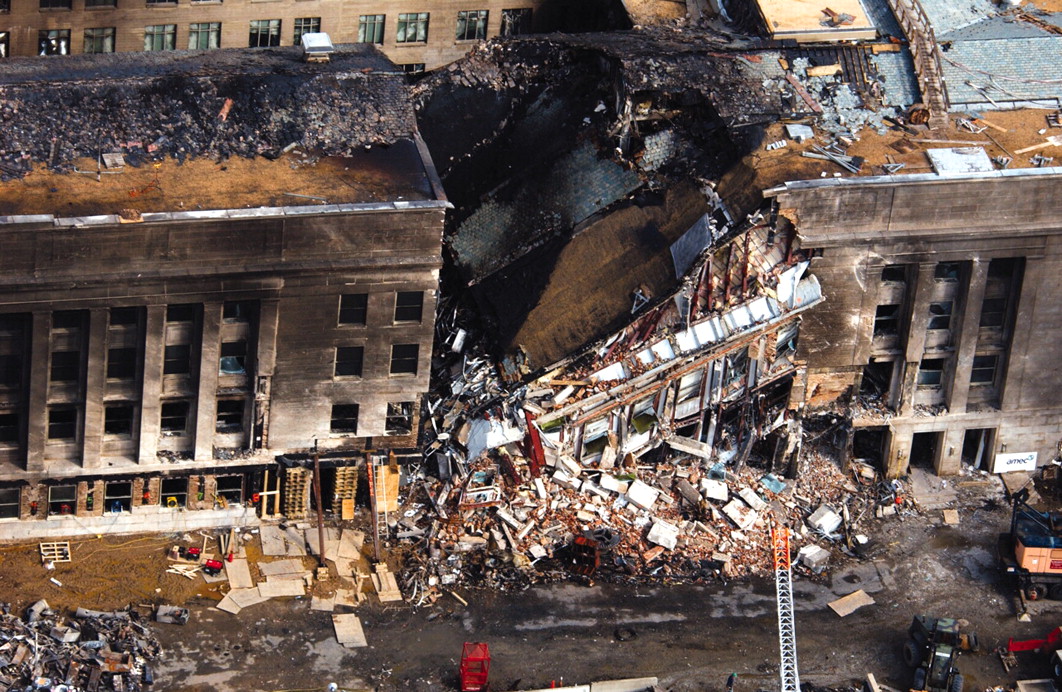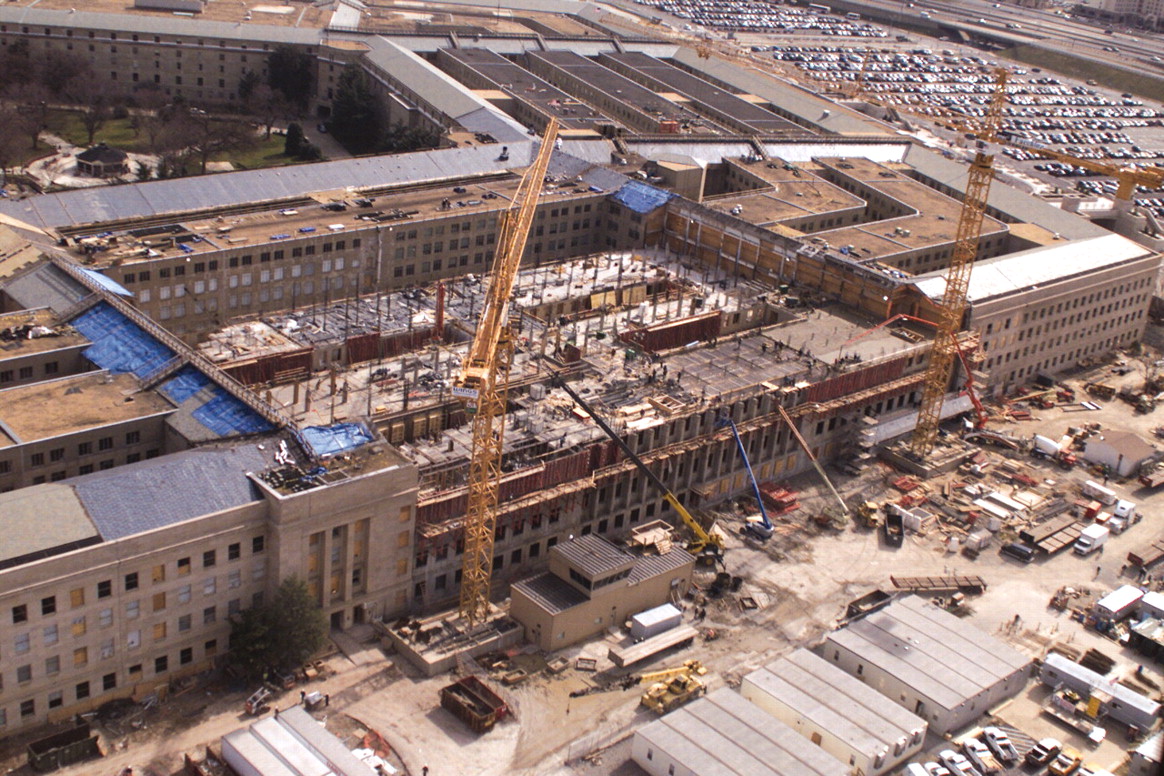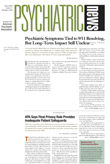Starting in the first hours and days after terrorists slammed American Airlines Flight 77 into the Pentagon, military mental health specialists launched a comprehensive long-term outreach program to help Pentagon personnel and their families cope with the disaster. The attack killed all 59 people on the plane and 125 at the Pentagon.
Known as Operation Solace, the ongoing program is a joint effort of the surgeons general of the Army, Navy, and Air Force, with the Army taking the lead. It includes both a novel stress-management program at the Pentagon and steps to address psychological and physical health concerns related to bioterrorism or the attack in primary care clinics at military medical facilities in the Washington, D.C., region.
Psychiatrists and mental health professionals usually wait for people to seek assistance on their own, said Lt. Col. Charles Milliken, a staff psychiatrist at Walter Reed Army Medical Center and project officer of Operation Solace.
Career military personnel sometimes hesitate to access mental health services because of concerns about future security clearances, he said. His team knew that 45 percent of those in the blast area at the bombing of the federal building in Oklahoma City in 1995 developed psychiatric problems and that epidemiologic studies show only one of four persons with major psychiatric illness ever gets psychiatric help.
“We decided we needed to come up with a way of responding that lowered barriers to help seeking,” Milliken said. “We created ‘therapy by walking around.’ ”
A team that at its peak included nearly 100 psychiatrists, psychologists, social workers, nurses, and others walked office to office and desk to desk in the Pentagon, making contacts with nearly all of its more than 19,000 workers.
Operation Solace team members were familiar with military culture and its medical system, Milliken said. Since they already worked in the Washington, D.C., area, they could participate in a sustained response. Many knew one another.
Informal Referral Network Set Up
The team received strong support from the Pentagon’s military and civilian leadership. The unprecedented access to the Pentagon population, Milliken said, not only made it easy for those who wanted care to get it, but also fostered informal referrals from workers concerned about their office mates.
“We could see the 9/11 trauma each work section had faced,” he noted. Some people lost colleagues or had injured colleagues, while others had their files or computers destroyed. About 40 percent of the Pentagon was not usable after the attack. Many people ended up working elsewhere in the building, sometimes away from colleagues with whom they normally had close contact. People had concerns about coming back to the building, he said, but they returned to work. “It was an honor to be a part of this effort,” Milliken said. “We saw a lot of everyday heroism.”
Planning and prosecuting the war in Afghanistan brought additional stress, he said, as people had considerable work to do, yet often lacked their usual tools. At the same time, he said, gearing up for the war allowed healing to occur that might not otherwise have happened as quickly.
When mental health workers stopped by, people often first responded to queries about how they were doing by saying, “Everything’s fine.” Team members found they could elicit more introspective replies by handing out fact sheets on normal stress responses and coping tactics.
“We tried to engage people in conversation,” Milliken recalled, asking, for example, “How did the actual day of the attack go for you? How long was it until your spouse or loved ones heard you were OK?” This had been a big problem, as many phone lines were down or jammed. Some workers’ children—Milliken’s among them—first heard about the attack at school, when other children rushed up to them screaming, “The Pentagon’s been bombed. Your dad or mom might be dead.”
Most people at the Pentagon work in large bays containing eight to 10 desks, Milliken said. In the days and weeks right after the attack, team members’ visits to those areas often turned into a spontaneous group event. “These modeled what we wanted to see happening,” he said. “People used us as an icebreaker to reach out to each other.”
Team Welcomed by Workers
“The fluid way in which we had access allowed us to revisit departments and individuals,” Milliken said. “Since people knew we were talking to everybody, no one felt singled out.” Workers refer to them as “the stress-management folks,” he said. The team continues to hear on a daily basis, “We’re glad to know you’re here if we need you.”
With the passage of time, he noted, individual workers’ concerns have grown more idiosyncratic. People are less willing to air problems in the presence of colleagues, so team members often converse with them over cups of coffee in the cafeteria. The continuing team members now include both Army active-duty members and hired civilians, freeing some of the psychiatrists and mental health professionals to return to their hospital and clinic assignments.
Most People Fared Well
About four months after the attack, the U.S. Army Center for Health Promotion and Preventive Medicine conducted a postdisaster health assessment survey of Pentagon workers. The approximately 4,800 responses indicated that about 40 percent of the workers who were in the Pentagon on September 11 had symptoms associated with one or more psychiatric disorders, including PTSD, generalized anxiety, panic attacks, depression, and alcohol abuse.
This suggests that seeds for potential psychological problems existed, Milliken noted. The Operation Solace team intervened early in a process that often has a negative spiral, he said. It emphasized that everyone reacts in some way to a trauma of this magnitude and sought to normalize these reactions rather than pathologize them, while still conveying that people may need help.
“We have incredibly good news,” he said. Most Pentagon workers and families experienced only transient reactions. In a letter published in the August 8 New England Journal of Medicine, Col. Charles Hoge, Lt. Col. Julie Pavlin, and Milliken reported that from September 11, 2001, to February 9, 2002, there was no significant increase in the total number of visits to behavioral health clinics at military treatment facilities within 50 miles of Washington, D.C., by military personnel or their family members. There were significant increases in the number of visits for anxiety disorders and acute stress reactions in children, however, and for adjustment reactions in adults.
Primary Care Outreach Program
In addition to its presence at the Pentagon, Operation Solace placed health care advocates in primary care clinics serving Department of Defense health care beneficiaries. The advocates, who are social workers, master’s-level psychologists, and clinical nurse practitioners, address psychological and other health concerns arising from the Pentagon attack or bioterrorism issues.
In any given year, about 85 percent of active duty military personnel and their family members will have at least one primary care appointment, said Lt. Col. Charles Engel Jr., a psychiatrist and director of the Deployment Health Center at Walter Reed. There are 400,000 beneficiaries in the Washington, D.C., area and 10 health care portals, that is, routine channels through which people seek assistance.
The health care advocates ask each patient seen in the clinics a series of questions: Is the visit that day related to the events of September 11, to a bioterrorism/anthrax concern, or to some other deployment concern such as effects of an anthrax vaccination or other medications they were given? They try to meet patients’ needs for information and work with primary care physicians and clinic staff to assure patients receive comprehensive care.
For the most part, the clinics see healthy young people who have responded well to terrorism-related events, Engel said. “By being proactive,” he added, “we’re hoping to help prevent development of chronic health problems.”
Information about Operation Solace is posted on the Web at www.anewbirthoffreedom.com. Advice on stress management, helping children cope with a crisis, moving forward, and other mental health topics developed by the Walter Reed Health Care System is posted at www.wramc.amedd.army.mil/. ▪


